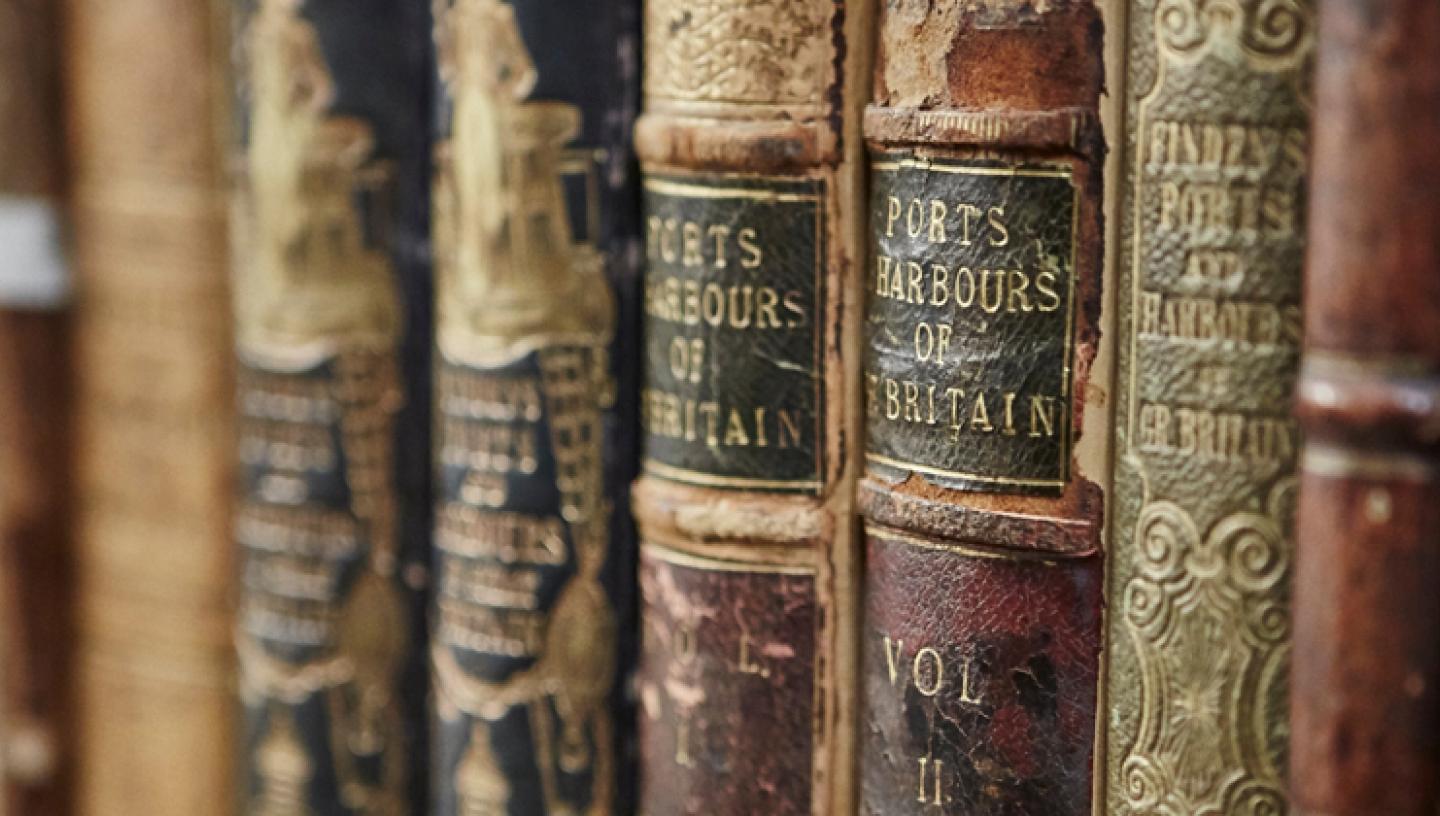
Music has played a central part in life at sea providing not only entertainment and contributing to the health and morale of seamen but also providing rhythm and cohesion to the everyday tasks of sailors and fishermen. This guide outlines the museum's collection of printed books, manuscripts and artefacts relating to music and the sea.
Documents
The earliest piece of music in the collection is a contemporary copy of a song composed by Queen Elizabeth I to celebrate the defeat of the Spanish Armada, 1588 (ref: SNG/4). Charles Dibden (1745–1814), the actor, dramatist and song writer is well represented in the collection. There are drafts of the words of three of his songs, 'Every Man His Own Pilot' (1801), 'The Standing Toast' (1811) and 'The Danes' (1807). There is also a manuscript copy by Dibdin of the words (first verse only) and music of 'Poor Jack' (1788) and an anecdote in his own hand regarding the words of 'Jack and the Windlass' (1791). Among the fourteen printed songs, the majority of which are autographed, are 'The Sailor's Return' (1791), 'Tack and Half Tack' (1795) and 'The Watery Grave' (1790). There are three songs by John Braham (1774?–1856) with words by Thomas Dibdin - 'The Heart of the Sailor' (1802), 'Love and Glory' and 'All's Well' (1805). Finally there is a programme of a musical performance in commemoration of Charles Dibdin at the Theatre Royal , Covent Garden in 1829.
Volumes
This class contains a volume of seventy-three printed songs mainly by Charles Dibdin and autographed or initialled by him, but also including works by Charles Dibdin the Younger (1768–1833) and Thomas Dibdin (1771–1841); many of the songs have naval subjects such as 'Jervis for Ever', 'The Death of Nelson' and the 'Blind Sailor'. The volume was probably compiled by Thomas Legard whose name it bears with the date 1806. There is also a full score, in manuscript, of a cantata entitled 'The Sea Engagement', celebrating the battle of the Nile, August 1798, and composed shortly afterwards (mss ref: MUS/3). This was composed by Adam Kroll who describes himself as an 'amateur' and is dedicated to Nelson. Arranged for an orchestra of forty-three performers, it consists of an overture, a descriptive instrumental piece, two airs and a duet.
Printed books
- Funeral Ode for music: to the memory of the immortal hero Lord Nelson (pub J Haddock 1805) 820-1:094
- Horatia Nelson's music book (pub c.1810) Includes manuscript songs and two pieces entitled Miss Horatia Nelson's minuet and Miss Horatia Nelson's delight. 784:094
- Emma, Lady Hamilton's songs (pub c.1810) 784.3:094
- The ladies collection of catches, glees, canons, canzonets, madrigals etc by J Bland (pub R Birchall c.1790) Inscribed 'Emma, Lady Hamilton 1802' 784.3:094
- The traveller's: or music's fascination: a dramatic opera by D Corri (pub c.1790) Inscribed 'Emma Hamilton' on title page. 782.7:094
- Music and musicians in early nineteenth century Cornwall: the world of Joseph Emidy - slave, violinist and composer by R McGrady (pub University of Exeter 1991) 78(423.7)
- Music of the Sea by David Proctor (pub HMSO 1992) 78
- English musicians in the age of exploration by I Woodford (pub Pendragon 1995) 78.07(42)"15/17"
- Drake's Drum and other songs of the sea by H Newbolt (pub Hodder & Stoughton 1915) 784.4
- Sailors songs and shanties by M Hurd and J Miller (pub OUP 1965) 784.4
- Handbook on the founding of Australia 1788, history, clothing, patterns, ship plans, architecture, songs, dances by J F Miller (pub Library of Australian History 1988)
This is not a complete record of all books and articles relating to music held in the Museum's library. A full index can be found on the Library and manuscripts catalogue.
The library also holds a collection of sheet music which is too extensive to list here but consists largely of Victorian ballads such as Married to a Mermaid, The Great Eastern Quadrille and A Tale of the Sea sung by Tom Costello ('This song must not be sung in Music Halls without the Permission of Mr Tom Costello').
Musical instruments
The museum also has a small collection of musical instruments with a maritime connection. These are:
- Chamber barrel organ by Broderip and Wilkinson, taken to sea by Admiral Sir Samuel Hood (c.1798–1811)
- Ship's piano by Bord of Paris c.1860
- Ship's piano by Raymond, USA c.1825
- Musical box by E Paillard & Co, St Croix, Switzerland. Greenwich Hospital view on lid
- Musical Box, HMS Canopus Ward room, naval action painted on lid.
- Violin taken on expeditions by Sir William Edward Parry.
- Banjo used by Dr Hussey on Shackleton's Antarctic expedition in Endurance, 1914 and signed by members of the expedition.
- Wooden flute by Monzani & Co, London used by William Petrie (1784–1842)
- Bugle of Naval Brigades serving in the Crimea and Indian Mutiny. By Collard and Collard, London. (Captain Sir William Peel relic)
- Bugle by Boosey & Co, presented to W Walker, HMS Calliope, 1916.
- Concertina by C Jones, Patent concertina manufacturer, used by seaman William Figg in the 1860s on board HMS Royal Oak and Juno.
- Drum used on board HMS St Fiorenzo to beat to quarters at the Nore Mutiny 1797
- Drum used on board HMS Liffey, 1813–1816
- Side Drum, Greenwich Hospital
- Bass Drum, HMS Lion, World War I.
Next steps
For general research help see:
- Research guide A2: Principal records for maritime research at the National Maritime Museum
- Research guide A3: Tracing family history from maritime records
Although care has been taken in preparing the information contained in this document, anyone using it shall be deemed to indemnify the National Maritime Museum from any and all injury or damage arising from such use.